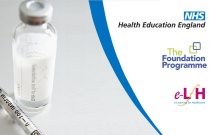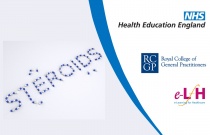Assessment of Un-erupted, Partially Erupted and Ectopic Molars
Tara Renton
0.50 Hours
This session will address the assessment of ectopic molars.
Postoperative Management
Michael Millwaters
This session covers the postoperative management of the patient from the pharmacological perspective. It looks at postoperative control of pain and swelling and postoperative control of infection that can be managed by the dentist.
Advanced EKG Assessment
Cathy Lockett RN, MHA, BSN, CCRN, EMT
2.00 Hours
The EKG is the most commonly-used procedure for diagnosing a wide variety of cardiac conditions, yet even the most seasoned nurses struggle to master interpretation. In this information-packed program cardiac expert, Cathy Lockett, RN, MHA, BSN, CCRN-K, will teach you easy-to-understand techniques to identify ischemia, injury, i....
Democratizing Patient Data: A Story of Patient Empowerment
Kristina D. Sheridan, MS and Kate R. Sheridan
1.00 Hours
The most critical member of the care team, the patient, is being left out. Their data are not captured in a way that can be leveraged at home by patients, or in the clinical setting by providers. There are few patient-facing tools designed to support their daily care at home, or capture how they are doing between appointments.....
Creating an EHR-Based Antimicrobial Stewardship Program
David Ratto, MD
0.75 Hours
Utilizing our present EHR system, we built our own in-house Antimicrobial Stewardship Program to meet all federal, state, CDC and Joint Commission guidelines and mandates. We moved from a time-consuming paper-based system taking hours with incomplete tasks to now completing mandated antibiotic rules on all patients in less than....
Case Study - Kidney Injury - Podcast
Dr. Waqas Baig
One case study about managing acute kidney injury
Child Mental Health: Getting a Good Start
Avril Washington Consultant Paediatrician, Paediatric Mental Health and Complex Care
This session will outline the factors in the first 5 years of life that contribute to the development of emotional wellbeing and mental health throughout the lifespan and give an overview of the assessment and management of behavioural problems.
Children Learning Two or More Languages
Sean Pert Highly Specialist Speech and Language Therapist
0.50 Hours
This session provides an introduction to the key issues to consider with regard to children learning more than one language. It will provide you with current evidence-based guidance, relevant for practitioners advising parents of bilingual children.
Communicating With Families
Guy Larrington - Family Psychotherapist
0.50 Hours
This session outlines the importance of engaging with parents, carers and families. It will introduce you to what it means to engage families and basic principles in doing so. It introduces you to listening skills and skills in asking questions that help you communicate effectively with families.
Diagnosing and Managing Eye Problems in Children
Stella Hornby Module Editor - Eye Problems
0.50 Hours
This session covers the principles of testing vision in children in primary care. The process of how to check corneal light reflex is described along with the principles and management of strabismus and amblyopia. Leukococoria in young children is considered along with the importance of early recognition and treatment. The sessi....
Promoting Attachment and Wellbeing Part 2: In Practice
Catherine Lowenhoff Independent Nurse Consultant, LCB Resources Ltd. Full-time PhD student, Oxford
0.50 Hours
This session is the second of two in a series focusing on attachment and wellbeing. The first session provided an overview of attachment theory and highlighted the importance of sensitive, responsive caregiving for the optimal development of the child's brain and the development of secure attachment. This second session theref....
Prospective Risk Assessment in Primary Care
Jane Carthey Patient Safety and Human Factors Specialist and Christine Johnson General Practitione
0.50 Hours
This session provides information on how to use prospective risk assessment in primary care. It will also explain why improving patient safety requires us to identify incidents before they occur, rather than simply learning after the event through incident reporting or a significant event audit. This session was reviewed by Such....
Epidemiology of Tooth Surface Loss
June Nunn, Michael O’Sullivan
This session describes the epidemiology of dental erosion, ways of assessing erosion and the limitations of indices currently available.
Assessing and Treating Calcified Canals
Paul McCabe
This session looks at the indications for treatment of calcified canals, the methods of avoiding treatment difficulties in calcified canals and treating these teeth successfully.
Safe Prescribing of Insulin
Rifat Malik and Eileen Turner
0.50 Hours
In clinical practice, you will frequently be required to prescribe insulin. Insulin is a safe and powerful therapy if used appropriately. This session aims to increase confidence in prescribing insulin. It will provide you with the knowledge to avoid common insulin prescribing errors.
Paediatric - Hearing
Bernie Borgstein
0.50 Hours
This session looks at the epidemiology of hearing loss and the impact it has on emotional behaviour. It will also cover the treatment and management of hearing impairment in school.
Causes of Mitral Stenosis
Ceri Davies
0.25 Hours
This session will cover the causes of mitral stenosis. It will also look at the importance of obtaining a full history regarding previous therapies
Risk of In-stent Re-stenosis
Syed Raza
0.25 Hours
This session discusses the types of stents used to reduce re-stenosis and their success rates.
Anticoagulation in Pregnancy
Catherine Nelson-Piercy
0.50 Hours
This session covers the use of anticoagulants in pregnancy, with specific reference to the acute management of venous thromboembolism (VTE) in pregnancy. The safety issues for the mother and fetus of unfractionated heparin (UH), low molecular weight heparins (LMWH) and warfarin are discussed.
Perturbations and Clinical Features Caused by Hypothermia
Claire Dow
0.25 Hours
This session focuses on how to recognise the common clinical features caused by hypothermia and the resulting ECG findings.
Prescribing Long-Term Steroids
Gayathri Rabindra GP Trainee ST2
0.50 Hours
This session emphasises the importance of safe prescribing of steroids and demonstrates how this can be done in practice.
Parental Relationships Part 1: Influences and Effects
Penny Mansfield - Director, One Plus One
0.50 Hours
The session aims to help you understand the effect of the parent-to-parent relationship on children's health and wellbeing and to help you support families where there is relationship distress.
Oxygen Transport and Consumption (anaesthesia)
Fred Roberts FRCA
0.50 Hours
This session explains how much oxygen is used by the body and how it is carried in the blood to supply the tissues.
Adherence and Concordance in Young People
Marcelle Sousa and Terry Segal
0.50 Hours
This session examines factors that influence the way young people take medicines in adolescence. It will also explore some of the challenges encountered by health professionals who care for young people who may have health beliefs conflicting with those of their parents or professionals.
Critical Appraisal - Therapy RCT
Veronica Wilkie
This session looks at answering a question posed by a patient about a therapeutic intervention. The session includes a critical appraisal of a randomised control trial.This session was reviewed by Suchita Shah and last updated in February 2015.























